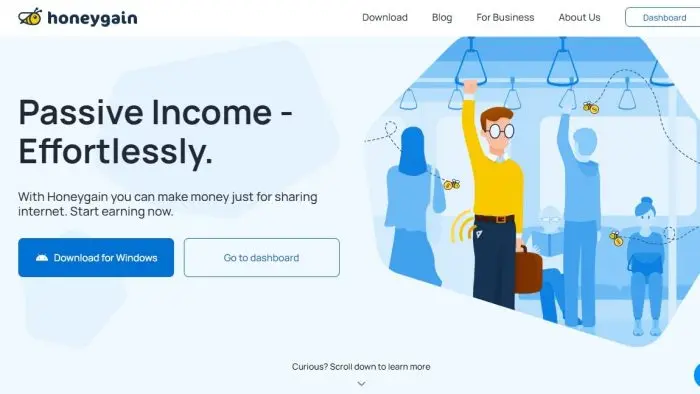Introduction
In the digital age, making money online has never been more accessible. Whether you’re looking to supplement your income, replace your 9-to-5 job, or build a thriving business, the internet offers countless opportunities. However, with so many options available, it can be overwhelming to decide where to start.
This blog post will guide you through three proven systems to make money online: Affiliate Marketing, Selling Digital Products, and Starting an Online Service-Based Business. Each system has its own set of benefits, challenges, and income potential, making them suitable for different types of entrepreneurs. By the end of this post, you’ll have a clear understanding of which system aligns best with your skills, interests, and goals.
Quick Summary for Busy Readers
- Affiliate Marketing: Ideal for beginners with low startup costs, affiliate marketing allows you to earn commissions by promoting other people’s products.
- Selling Digital Products: This system offers high-profit margins and passive income potential by selling eBooks, courses, or software online.
- Online Service-Based Business: If you have a skill or expertise, you can offer services like freelancing or consulting, providing flexibility and low overhead costs.
Read Also: Fiverr: Your Marketplace for Freelance Services
Let’s deep dive into each system:
System 1: Affiliate Marketing
What is Affiliate Marketing?
Affiliate marketing is one of the most popular and beginner-friendly ways to make money online. It involves promoting other people’s products or services and earning a commission for every sale made through your unique affiliate link. Essentially, you’re acting as a middleman who connects potential customers with products they need.
Affiliate marketing works in four simple steps:
- Join an Affiliate Program: Find a company or platform that offers an affiliate program. Popular options include Fiverr, Amazon Associates, ShareASale, Impact, Partnerstack, ClickBank and so on.
- Promote Products: Choose products you want to promote, and share them with your audience via blog posts, social media, email newsletters, or YouTube videos.
- Earn Commissions: When someone clicks on your affiliate link and makes a purchase, you earn a commission.
- Scale Your Efforts: As you gain experience, you can promote more products, increase your traffic, and boost your earnings.

Register Free For Honeygain and Start Making Money Daily Doing Almost Nothing
Why Choose Affiliate Marketing?
Affiliate marketing is an excellent choice for beginners because of its low barrier to entry and the ability to scale over time. Here are some of the key reasons why you might consider starting with affiliate marketing:
- Low Startup Costs: Unlike other business models, you don’t need to invest in inventory, production, or shipping. Your primary investment will be time and possibly a website.
- No Customer Support: You don’t have to handle customer inquiries, returns, or complaints. The merchant takes care of all post-sale services.
- Scalability: As your audience grows, your earning potential increases. With consistent effort, you can scale your affiliate marketing business to generate a significant income.
- Flexibility: You can promote products in any niche, allowing you to align your marketing efforts with your personal interests and passions.
How to Get Started with Affiliate Marketing
- Choose a Niche: The first step is to identify a niche that you’re passionate about and has a profitable audience. A niche is a specific segment of a market, such as fitness, technology, beauty, or personal finance. The more focused your niche, the easier it will be to target your audience.
- Find Affiliate Programs: Research and join affiliate programs that offer products or services in your chosen niche. Popular platforms like Expertnaire, Partnerstack, Impact, Amazon Associates, ShareASale, and ClickBank provide a wide range of products to promote. Additionally, many companies offer their own affiliate programs, which you can join directly through their websites.
- Build a Platform: You’ll need a platform to promote your affiliate products. This could be a blog, YouTube channel, social media account, or email newsletter. Your platform should be tailored to your target audience and allow you to share valuable content that incorporates your affiliate links naturally.
- Create Valuable Content: Content is the backbone of affiliate marketing. You need to create high-quality, informative content that engages your audience and encourages them to take action. This could include product reviews, how-to guides, comparison posts, and more. The key is to provide value to your audience while subtly promoting your affiliate products.
- Drive Traffic: Once your content is live, you’ll need to drive traffic to it. There are several ways to do this, including SEO (Search Engine Optimization), social media marketing, email marketing, and paid advertising. The more traffic you can drive to your affiliate content, the more opportunities you have to earn commissions.
My Experience with Affiliate Marketing:
When I started with affiliate marketing, I focused on the tech niche, promoting gadgets and software. Initially, my earnings were modest, but as I refined my content strategy and learned to target the right audience, my commissions began to grow steadily. Consistency and learning from data were key to my success.
Pros and Cons of Affiliate Marketing
- Pros:
- Low startup costs
- No need for inventory or customer service
- Potential for passive income
- Can be done alongside other projects
- Cons:
- Earnings depend on traffic and conversion rates
- Can take time to build a substantial income
- Requires ongoing content creation

System 2: Selling Digital Products
What Are Digital Products?
Digital products are intangible assets or media that can be sold online repeatedly without the need for inventory or restocking. Examples include eBooks, online courses, software, templates, and digital artwork. The beauty of digital products is that once you’ve created them, they can be sold an infinite number of times, making them a highly scalable source of income.
Why Selling Digital Products is Lucrative
Selling digital products can be incredibly lucrative due to their high profit margins and passive income potential. Here’s why:
- High Profit Margins: Unlike physical products, digital products don’t incur production, shipping, or storage costs. This means that after the initial creation cost, almost every sale is pure profit.
- Passive Income Potential: Once your digital product is created and listed for sale, it can generate income passively with minimal ongoing effort. Of course, marketing and customer service may require some time, but the product itself doesn’t need to be recreated.
- Global Reach: Digital products can be sold to anyone with an internet connection, allowing you to tap into a global market. This expands your potential customer base significantly.
- Unlimited Inventory: Since digital products are downloadable, you never run out of stock. This means you can make an unlimited number of sales without worrying about inventory management.

Register For FlexFinance Here
How to Create and Sell Your First Digital Product
- Brainstorm and Validate Ideas: Start by identifying a problem that your audience needs solving. This could be in the form of knowledge (eBook or course), tools (software or templates), or creativity (artwork or music). Validate your idea by researching if there’s a demand for it and if people are willing to pay for it.
- Create Your Digital Product: The creation process will vary depending on the type of digital product you’re making. For example:
- eBooks: Write and design an informative eBook that provides value to your readers. You can use tools like Canva or Adobe InDesign to create a professional-looking product.
- Online Courses: Record video lessons, create supplementary materials, and organize them into a cohesive course. Platforms like Teachable or Thinkific can help you host and sell your course.
- Software/Apps: Develop a software tool or app that solves a specific problem. If you’re not a developer, consider outsourcing the technical work to a freelancer.
- Set Up a Sales Platform: You’ll need a platform to sell your digital product. Options include:
- Your Website: Selling through your own website gives you full control over pricing, branding, and customer relationships.
- Online Marketplaces: Platforms like Etsy (for digital art), Gumroad (for a variety of digital products), or Amazon Kindle Direct Publishing (for eBooks) allow you to reach a broader audience.
- Third-Party Platforms: If you’re selling courses or software, platforms like Gumroad, Udemy or AppSumo can help you reach an established customer base.
- Market Your Product: To drive sales, you’ll need to market your digital product effectively. Use a combination of SEO, content marketing, social media promotion, and email marketing to reach your target audience. Consider offering discounts or bonuses to incentivize purchases.
- Provide Excellent Customer Support: Even though digital products require minimal maintenance, providing excellent customer support is crucial for building trust and encouraging repeat business. Make sure your customers can easily access their purchases and resolve any issues quickly.
My Experience Selling Digital Products:
Creating and selling digital products has been a game-changer for me. I started with eBooks, leveraging my knowledge in the content creation and monetization space. The ability to create something once and sell it indefinitely has provided me with a steady stream of income. It also allowed me to establish authority in my niche, which further boosted my sales.
Pros and Cons of Selling Digital Products
- Pros:
- High profit margins
- Passive income potential
- Scalability
- Global reach
- Cons:
- Requires upfront effort to create the product
- Marketing is essential to drive sales
- Can be competitive depending on the niche
System 3: Online Service-Based Business
What is an Online Service-Based Business?
An online service-based business involves offering your skills or expertise to clients over the internet. This could range from freelance writing, graphic design, and virtual assistance to consulting, coaching, or even remote technical support. Unlike selling products, which are one-time transactions, services often involve ongoing work and client relationships, leading to repeat business and potentially higher earnings.
Why Start an Online Service-Based Business?
Starting an online service-based business is an excellent option if you have a specific skill set or expertise that others are willing to pay for. Here’s why this model is worth considering:
- Low Startup Costs: You typically don’t need much capital to start an online service-based business. Your primary investment is your time and any tools or software necessary to deliver your service.
- High Demand: There’s a growing demand for online services, as businesses and individuals increasingly turn to freelancers and remote professionals for specialized tasks.
- Flexible Work Environment: You can work from anywhere, set your own hours, and choose the clients you want to work with. This flexibility is one of the biggest draws of online service businesses.
- High Earning Potential: Depending on your skill level and the type of service you offer, you can command high rates. For example, consultants, coaches, and specialized freelancers can earn significantly more per hour than traditional employees.
How to Start Your Online Service-Based Business
- Identify Your Skill Set: The first step is to identify a skill or expertise that you can offer as a service. This could be something you’re already proficient in or a skill you’re willing to learn and develop. Common examples include writing, graphic design, social media management, coding, or business consulting.
- Define Your Target Market: Determine who your ideal clients are and where to find them. This could be small businesses, entrepreneurs, or individuals in need of your services. Understanding your target market will help you tailor your services and marketing efforts to meet their specific needs.
- Create a Professional Online Presence: Your online presence is crucial for attracting clients. Create a professional website that showcases your services, portfolio, testimonials, and contact information. If you’re just starting, platforms like LinkedIn, Upwork, or Fiverr can help you establish credibility and connect with potential clients.
- Set Your Pricing: Pricing your services can be tricky, especially when you’re starting out. Research what others in your industry are charging and consider your experience, the complexity of the work, and the value you provide. You can start with competitive rates and gradually increase them as you build your portfolio and reputation.
- Market Your Services: Marketing is key to attracting clients. Use a combination of networking, content marketing, social media, and paid advertising to get your services in front of your target audience. Word-of-mouth referrals can also be incredibly powerful, so make sure to deliver excellent work to your initial clients.
- Deliver Quality Work: Your reputation hinges on the quality of the work you deliver. Make sure to meet deadlines, communicate clearly with your clients, and provide results that exceed expectations. Satisfied clients are more likely to refer you to others and provide positive reviews that can boost your business.
My Experience with Online Service-Based Business:
I started offering freelance writing services to build my online business. The flexibility and low startup costs were appealing, and I quickly found a niche in creating content for digital marketing. Over time, I expanded my services to include coaching and consulting, which significantly increased my earnings. Building relationships with clients and consistently delivering high-quality work were key to my success.
Pros and Cons of an Online Service-Based Business
- Pros:
- Low startup costs
- High earning potential
- Flexible work environment
- Opportunity for ongoing client relationships
- Cons:
- Time-intensive
- Requires continuous client acquisition
- Income can be inconsistent, especially in the early stages
Conclusion
Each of these three systems—Affiliate Marketing, Selling Digital Products, and Starting an Online Service-Based Business—offers unique opportunities and challenges. The best system for you depends on your skills, interests, and goals. If you’re looking for a low-risk way to start, affiliate marketing might be the way to go. If you have a passion for creating, selling digital products could provide high returns. And if you’re skilled in a particular area, an online service-based business can offer both flexibility and high earnings.
Remember, success in making money online doesn’t happen overnight. It requires dedication, continuous learning, and the ability to adapt to changing trends. But with persistence and the right strategy, you can build a profitable online business that aligns with your lifestyle and financial goals.
Helpful Tools You can Try Out Today!
- Start Your Podcast Free Here!
- Build Your Brand: Step-By-Step Guide!
- Beehiiv – A Free Platform to Build Your Newsletter
- Get Cheap Domain name and Webhosting for your business
- Skool – Platform to Build Your Paid Community (14 Days Free Trial)
- Book Your next Vaccation Tour to popular sites in any country worldwide here

